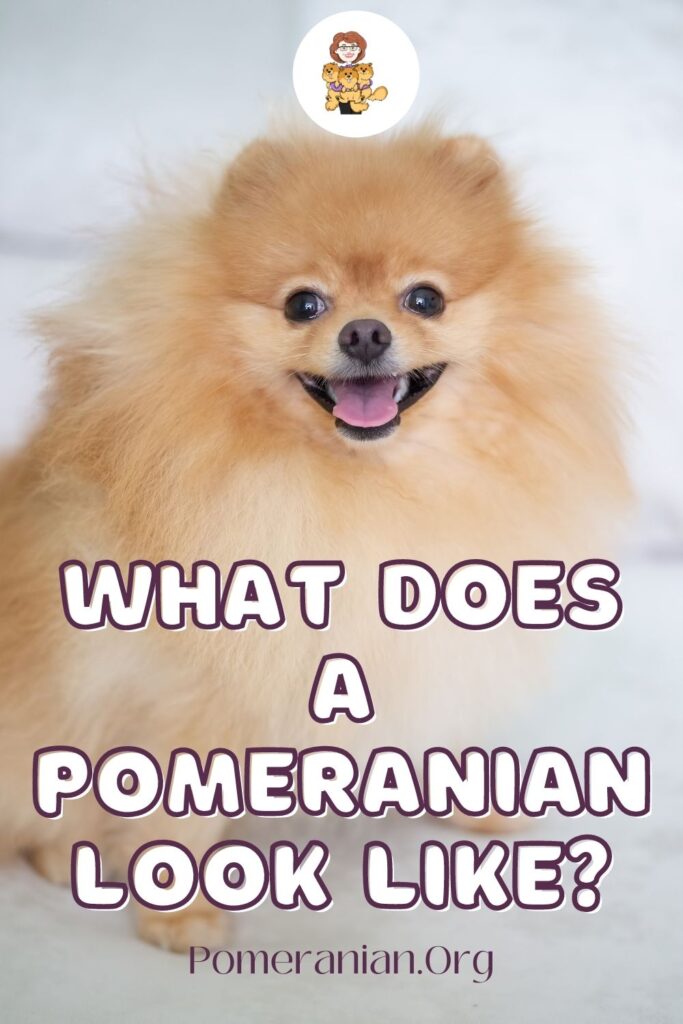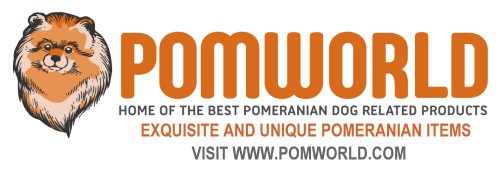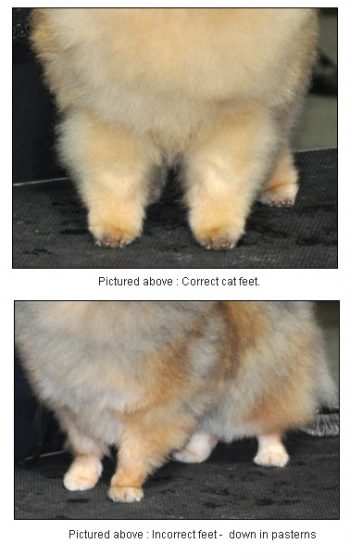Last Updated on 24/04/2024 by Dochlaggie. Post first published on April 27, 2023.
This article will answer in detail the question, what does a Pomeranian look like?
The Pomeranian is a toy dog that weighs between 3 and 7 lbs. This dog’s head is described in some breed standards as having a fox-like expression, in others being foxy in outline with small erect ears.
This dog breed has a thick, fluffy coat in various colors, including white, brown, orange, and black. This small dog usually measures 8 to 11 inches tall at the shoulder when fully grown. The tail is covered in long hair and is carried over its back.
If you want to be a Pomeranian owner, here are some things you should know about this breed. The first thing is the size and weight of these dogs. They’re small and usually weigh less than 7 pounds when fully grown.
Pomeranians can live in apartments or other smaller homes with ease as long as their family provides them with plenty of exercise outside on walks, which we recommend at least 1 for 30 minutes per day if possible.
These active little fellows also need grooming regularly (like once every two weeks), so ensure your home has enough space for all those tools like hair dryers, combs, brushes, etc.
Luckily this breed does not shed much, so you don’t need to worry about pet hair getting everywhere!
To truly understand the purebred Pomeranian dog, we need to know where they come from.
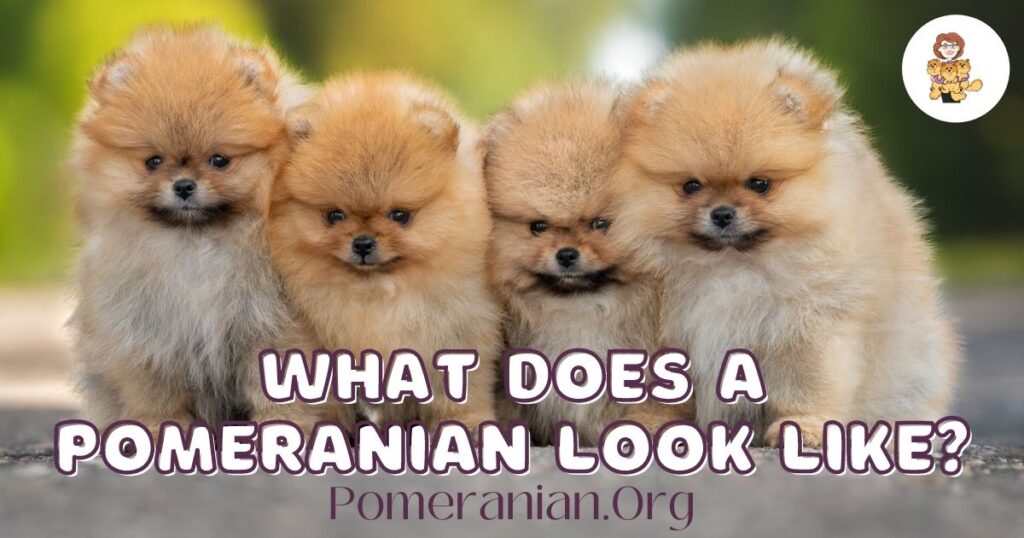
Pomeranian Dog Breed History
The Pomeranian originated in the Arctic region. While a Pom is a small dog, its history is long. The ancestors of the Pomeranian were well-suited to survive in cold habitats.
Their ancestors were bred for work and evolved to adapt to living in extremely cold climates. Today’s Pomeranians are bred and built to be loved and adored but should still retain the features of their ancestors.
The term form follows function also applies to the Pomeranian Dog. For the ancestors of the modern Pomeranian to survive in their habitat, which was northern Europe, these early spitz dogs had evolved with certain features which enabled their survival in minus 35-degree temperatures.
What Does a Pomeranian Look Like?
Let us have a close look at what does a Pomeranian looks like. The Pomeranian looks are explained with drawings and pictures. The purebred Pomeranian is a Spitz breed that developed characteristics necessary for survival in the harsh arctic climate.
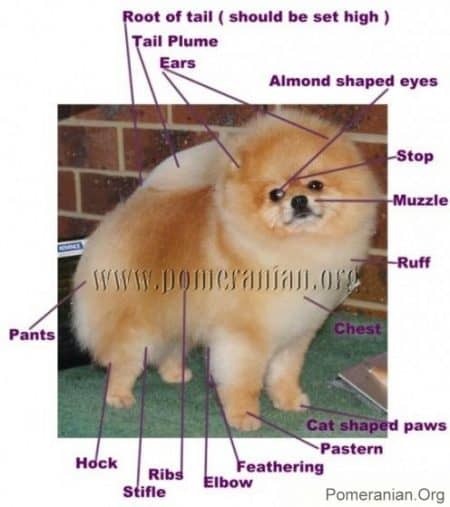
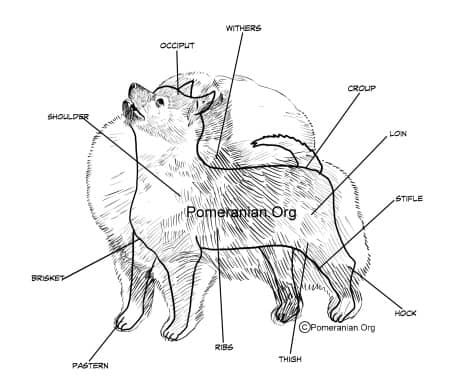
General Appearance:
The Pomeranian is a small, compact, dainty dog. He displays great glamour with his crowning glory- a dense, double coat made up of long, harsh, standoff guard hairs and a soft woolly undercoat. A Pomeranian has a short-coupled solid body, fine-boned, short neck, and neat and compact cat-like feet. The Pomeranian should move soundly with grace and style.
Why do Pomeranians Have a Dense Double Coat?
Pomeranians have a dense double coat for protection from the elements. It helps protect their body and keeps it warm in cold environments or cool when they’re out during hot weather conditions.
The Pomeranian’s outer coat is straight and puffy. It’s held off his body by the dense, soft, fluffy undercoat and acts as insulation in extremely cold and warm weather. The Pomeranian has short hair on its face.
What Colors Do Pomeranians Come In?
The Pomeranian comes in a range of colors. They can be born black, brown, or cream. However, the most common color is orange.
Pomeranian puppy dog colors include Beaver, Black, Blue, Brown or Chocolate, Cream, Lavender, Orange, Red, Sable Pomeranians, White, Black and Tan, Brown and Tan, Blue and Tan, Brindle, Parti colors, and Merle Pomeranians.
Average Weight Pomeranian:
How big do pomeranian dogs get? The Pomeranian ideally weighs 4 to 5 pounds (1.8 to 2.5 kg) but may weigh 3 to 7 pounds. The female Pomeranian is preferred to be a little larger than the male Pomeranian dog.
At What Age Do Pomeranians Stop Growing?
Pomeranian puppies will usually stop growing around their first birthday. However, they can continue to grow for another six months.
A Pom dog is officially classed as a Pomeranian adult at 12 months of age. Some Pomeranians are finished growing at one year, whilst other Pom dogs may not be Pomeranian adult size until about 18 months.
Pomeranian Head:

This Pomeranian head is full of character. Its eyes are bright and expressive. A correct-shaped Pomeranian head is an essential part of the breed.
A correct Pomeranian head should be wide behind the jaw and come gradually to a fine muzzle. A lengthy muzzle results in losing the essential wedge, and the Pomeranian will have a shepherd-like look. If the jaw is far too short, the Pomeranian will possess a muzzle much like a Chihuahua.
The skull should not be round and domed in shape. Pomeranians with abundant head coat may often give the illusion of having a rounder-shaped head than desired. Run your fingers over the Pomeranian’s skull to determine the exact head shape if in doubt. The Pomeranian’s head must have a moderate stop.
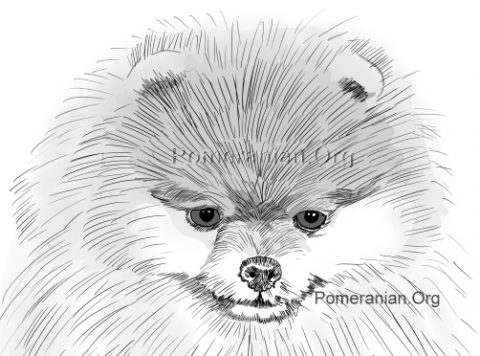
As a standard guideline, the tip of the nose to the stop and from the stop to the back of the head will measure 1:2 in most Pomeranians.
Pomeranian Ears:
Pomeranian ears are small and pointy. The ears must be small and well-positioned (not set too low down). I have never seen a Pomeranian with ears too small. Usually, the problem is the ears are either set too wide apart, too large, or both.
Why Do Pomeranians Have Small Ears?
The breed standard calls for small ears in the Pomeranian dog. The reason is that Pomeranians originated from parts of the Northern Hemisphere. This part of the world experiences temperatures as low as minus 30 degrees Celsius during winter.
Poms have small ears because they need to survive in cold habitats and need low ratios of volume to surface area. Pomeranian ancestors had to conserve every bit of heat possible while they fought to survive the harsh Arctic winter months.
Pomeranian Eyes:
The Pomeranian eye color should be dark. Pomeranian eyes should be medium-sized and, most importantly, almond-shaped. Incorrect eye shape and that important Pomeranian expression is lost.
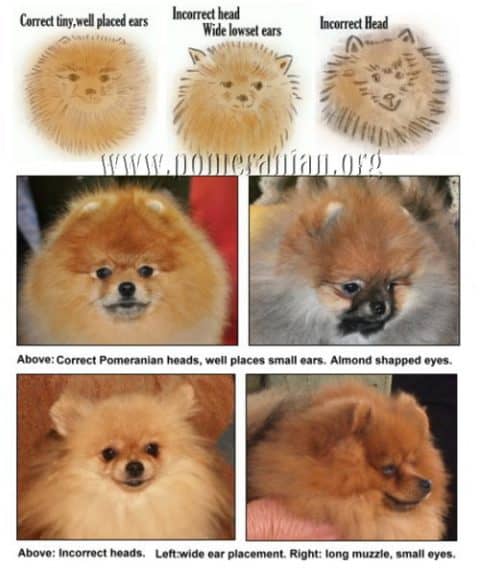
Pomeranian Teeth:
How many teeth do Pomeranians have? Puppies have 28 temporary teeth, which start erupting at 3 to 4 weeks of age in most toy breeds. Poms should have 42 permanent teeth by the time they are 6 to 8 months of age.
The Pomeranian is required to have a scissor bite with the top incisors slightly in front of the bottom ones.
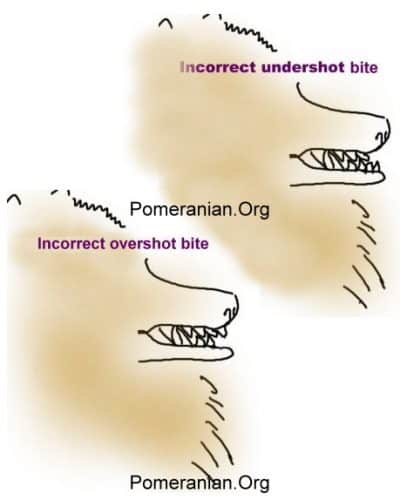
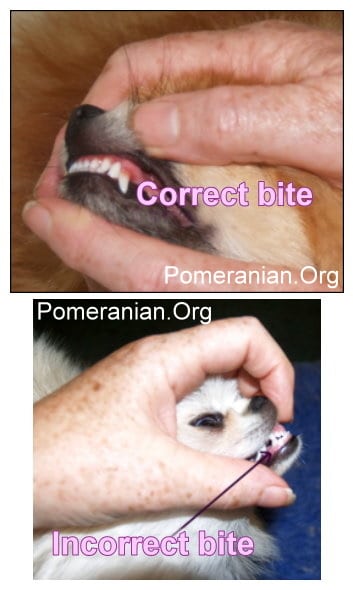
The Pomeranian Breed Standard on the bite “Bite-scissors, one tooth out of alignment is acceptable. “ Details on Pomeranian teeth problems and how to clean Pomeranian teeth.
Pomeranian Tail:
Pictured above: Examples of Pomeranian dog tails.
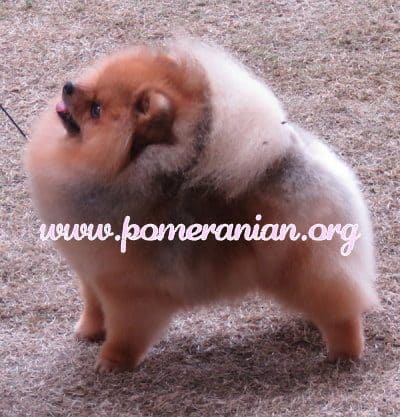
The tail is a unique characteristic of the Pomeranian breed. The Pomeranian tail, or the plume is profusely covered with long, harsh, straight hair and should be carried high and flat over the back.
The tail hair spreads out in a fan shape. Buttocks are well behind the root of the tail. If the tail is set high on the end of the backbone, it should not feel like a hard bone pressing into the palm when the palm is placed flat against the tail root.
If the tail root has a twist to the set, the tail will not lie flat but will fall over to one side, no matter how high the set, with the plume. A proper high tail set has no feel of boniness.
Why do Pomeranians Have Tails That Curl Over Their Backs?
Most of the tails of spitz-type northern dog breeds (e.g. Alaskan Malamute, Husky, Chow Chow) and Pomeranians curl over their backs. This breed feature helped keep their ancestors’ faces warm when they curled up to try to sleep in cold climates.
A Low Tail-Set Spoils The Outline Of The Pomeranian
Pom tails should not be curled, nor should it fall to one side. If the tail is set low, the bone will press into the palm when the test is made, and the root can be seen to protrude outward and upwards instead of disappearing into a flat plume up the back.
An extremely low tail set will cause the tail to circle upward in a “squirrel” tail. The tail should not be curled, nor should it fall to one side. A low tail set spoils the outline of the Pomeranian.
Pomeranian tails that are tightly curled or even kinked are a fault. Judges can be observed running fingers along with Pomeranian tails during the examination at dog shows.
Pomeranian puppies may inadvertently damage their tail during rough play with other pups, so care must be taken not to allow any rough play with your Pup.
Pomeranian Movement:
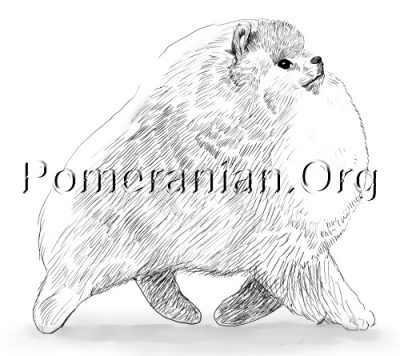
Pomeranian Fronts:
Correct and Incorrect Fronts and Pomeranian Action:
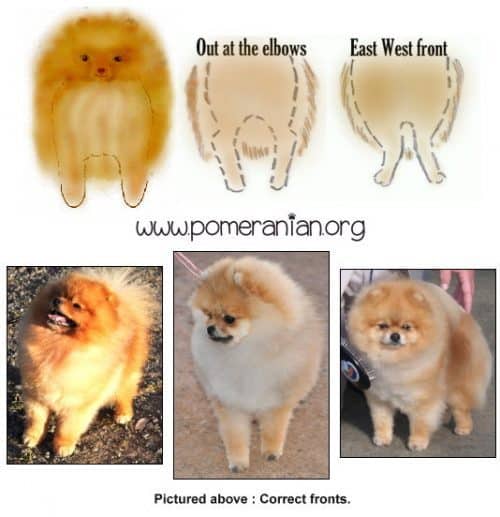
High stepping, paddling in the front, and high kicking rear legs are incorrect. Single tracking, very close or weaving front or back movement usually indicates a lack of body and is incorrect.
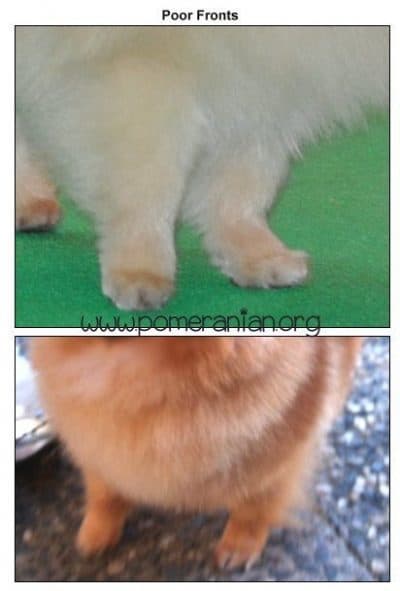
Pomeranian Front Movement:
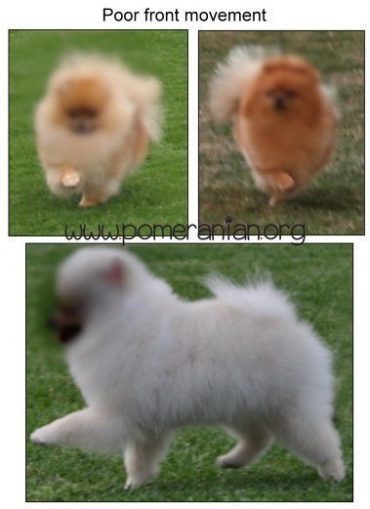
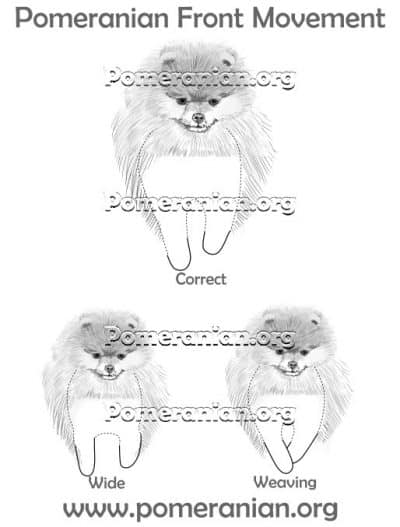
Pomeranian Hindquarters:
Angulation of the hindquarters must balance with front angulation. Viewed from behind, the pom’s legs are straight and parallel.
Viewed from the side, his buttocks are well behind the base of the tail. Hocks are perpendicular to the ground.
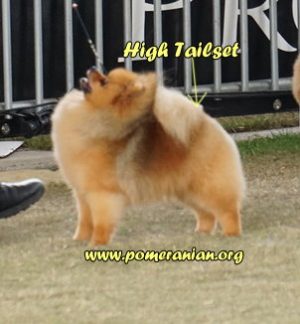
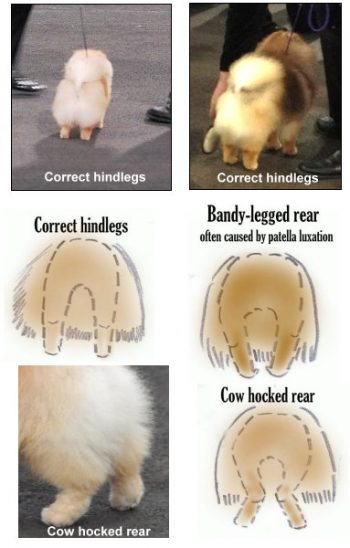
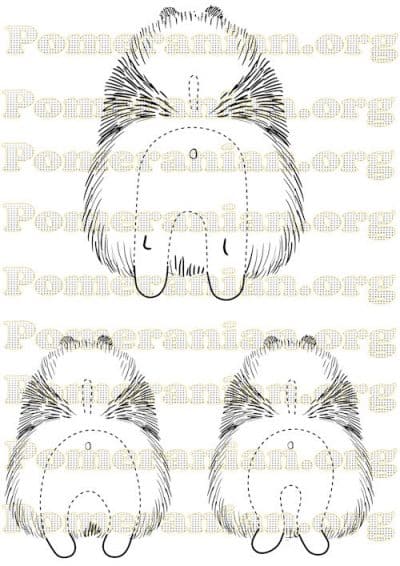
Pomeranian Rear Movement:
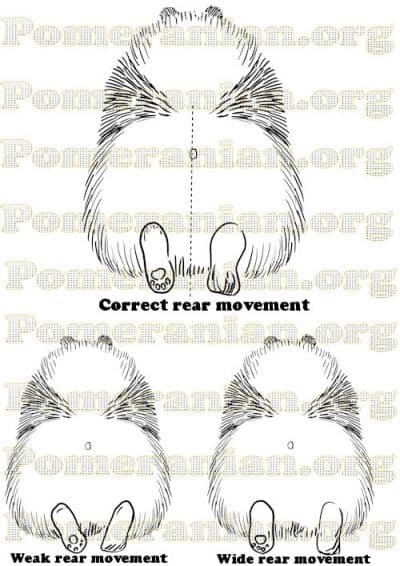
Pomeranian Feet:
A Pomeranian’s feet must be small, compact and resemble a cat’s paw with strong and straight pasterns. The feet are well arched, compact, and turn neither in nor out. He stands well up on his toes. Long thin feet with spreading toes or down on pasterns are undesirable. When trimmed, the feet should look like an extension of the legs with only a small definition.
Why do Pomeranian Paws Resemble Cat Paws?
Pomeranian paws needed to be small and compact to enable the ancestors of the present-day Pomeranian easy movement across snow-covered landscapes. A dog with flat feet would have had difficulty moving across the type of lands inhabited by the Pomeranian’s ancestors.
Pomeranian Temperament:
The Pomeranian personality makes this dog a delightful family member. He may now come packaged in an extremely small parcel; however, he has not forgotten his heritage, and Pomeranian behavior characteristics can be similar to that of an enormously large husky dog.
Pomeranians as pets, are loyal and devoted. Other Pomeranian traits include loving, mischievous, affectionate, and incredibly energetic.
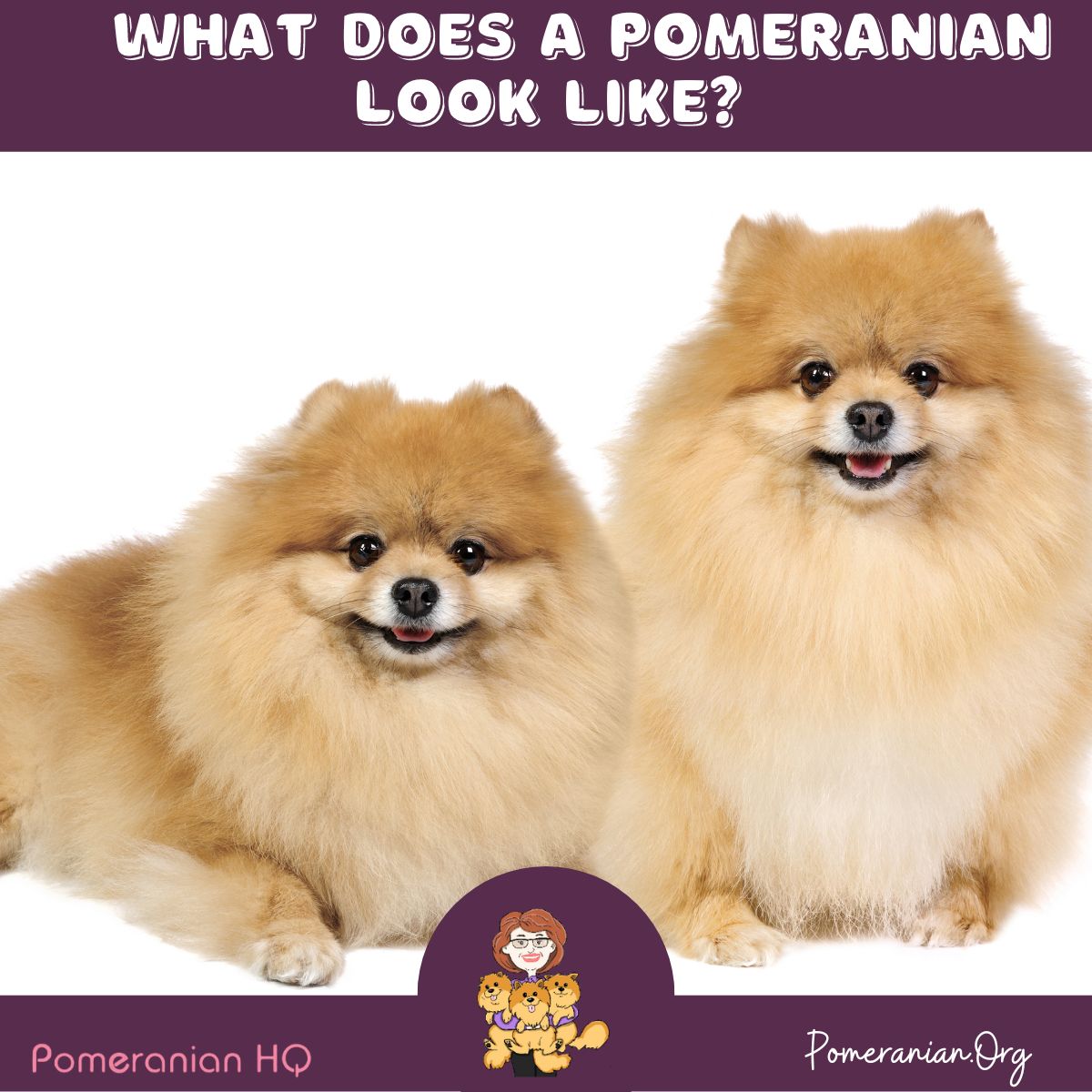
Conclusion: What Does a Pomeranian Dog Look Like?
I hope this article has helped you determine what a Pomeranian dog looks like and how these dogs differ from other purebred dogs.
The Pomeranian is a toy dog breed that originated in Europe. They are small, fluffy dogs with long fur that needs to be groomed regularly. This breed is also known for its stubborn personality.
If you’re considering bringing one of these cute little guys into your home, there are many things you need to know before adopting a Pomeranian puppy. The Pomeranian Headquarters website is here to help you learn more about this breed.
Copyright Pomeranian.org. All Rights Reserved.
References and Further Reading:
Official Standard of the Pomeranian (AKC). American Kennel Club, 2011.
English Kennel Club Pomeranian Breed Standard, 2017.
Denise Leo, The Pomeranian Handbook.
